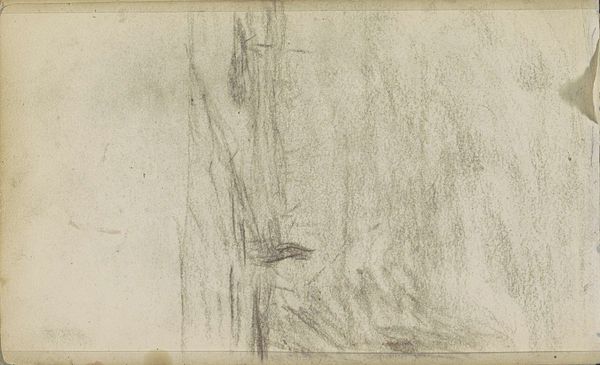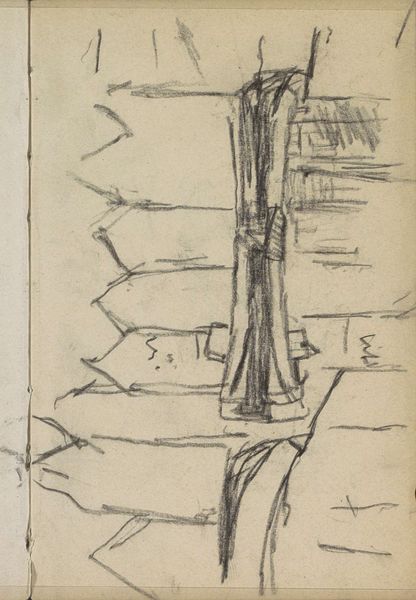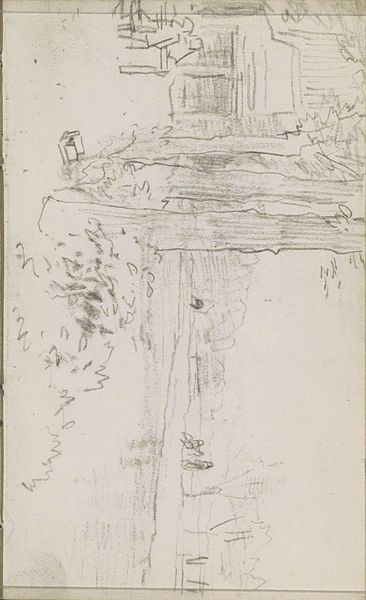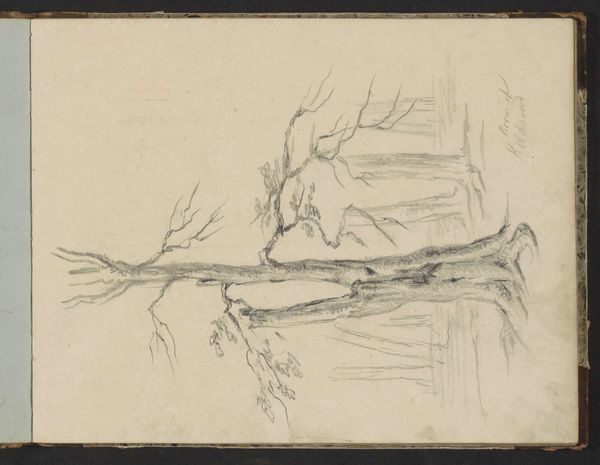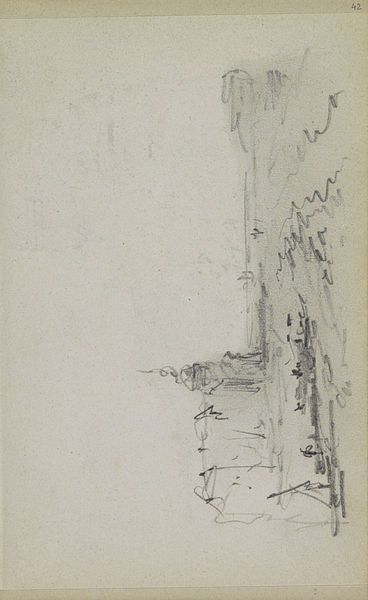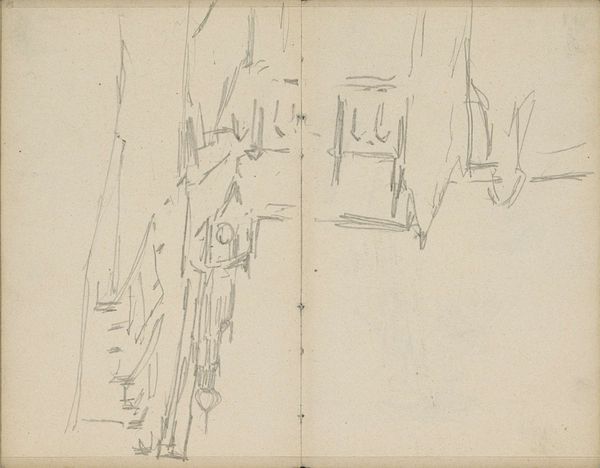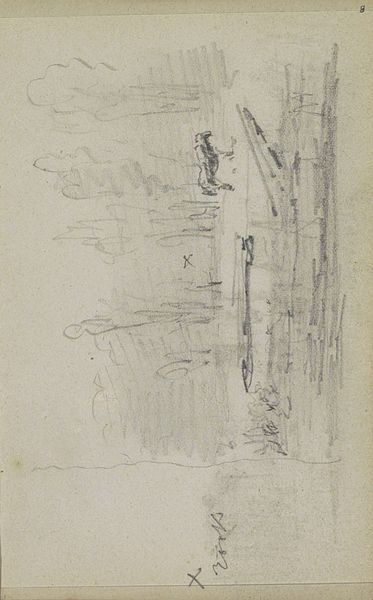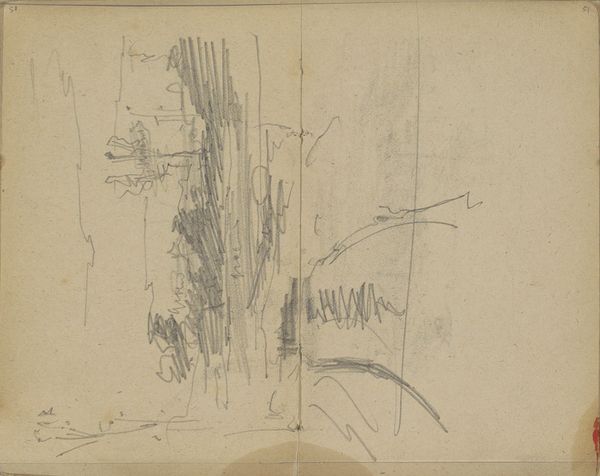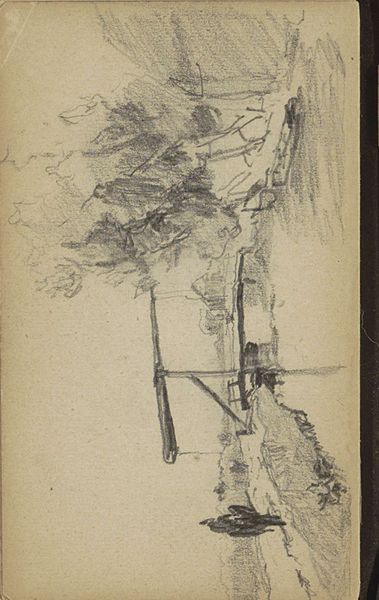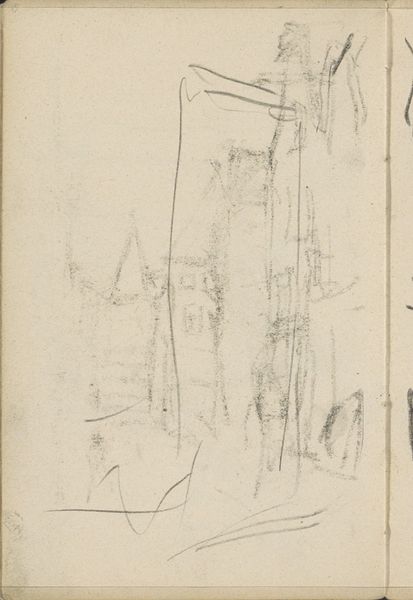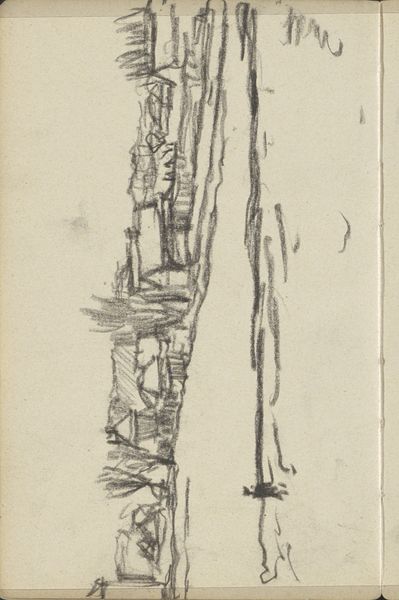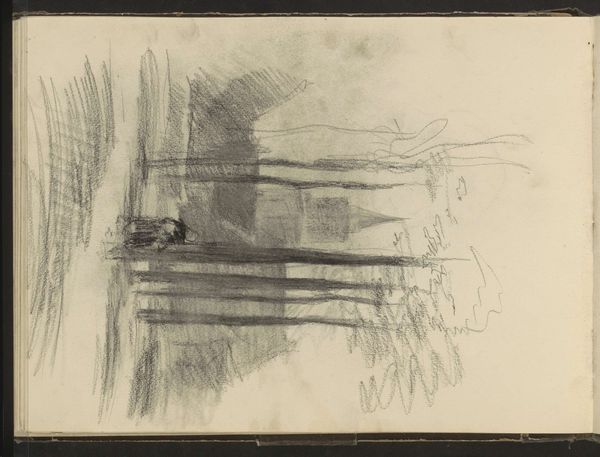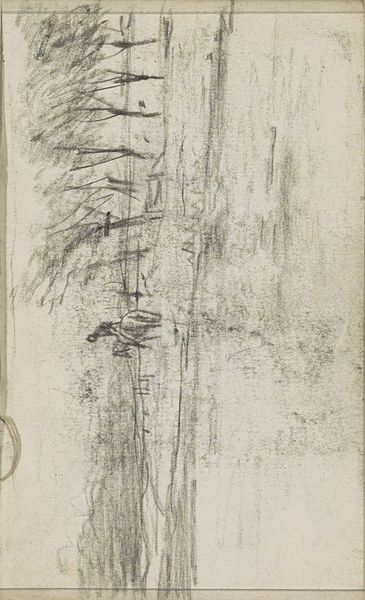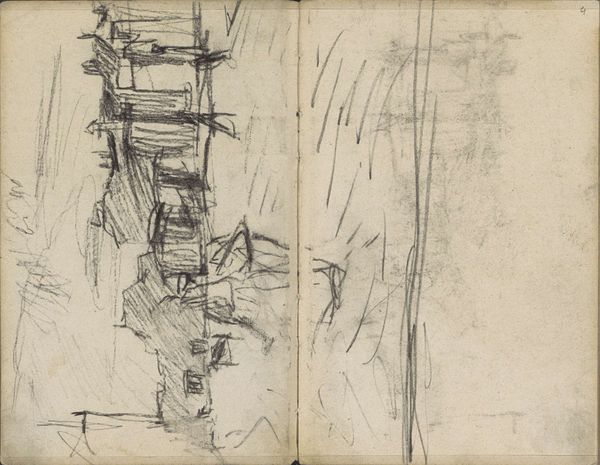
drawing, pencil
#
drawing
#
amateur sketch
#
toned paper
#
light pencil work
#
impressionism
#
pencil sketch
#
incomplete sketchy
#
landscape
#
personal sketchbook
#
detailed observational sketch
#
pen-ink sketch
#
pencil
#
sketchbook drawing
#
sketchbook art
#
realism
Copyright: Rijks Museum: Open Domain
Curator: Here we have "Landschap met bomen," or "Landscape with Trees," a pencil drawing created sometime between 1834 and 1903 by Johan Hendrik Weissenbruch. It's currently held here at the Rijksmuseum. What strikes you most about it? Editor: The stark simplicity, almost skeletal in its rendering, evokes a certain melancholy. The starkness in what could be inviting foliage strikes me as somber, what do you think? Curator: Well, I think focusing on the materials, the immediate accessibility of pencil and paper speaks volumes. Weissenbruch wasn’t crafting a finished masterpiece, but rather engaging in direct, unmediated observation. Consider how democratic a tool the pencil is. The rapid execution suggests this was likely created en plein air. Editor: Precisely. This rapid method mirrors the increasing industrialization during his time. Art capturing fleeting moments becomes an act of resistance, asserting personal vision against the relentless march of mechanization. I also think of class dynamics here; not every person has the same opportunities to explore nature, and their reflections will reflect societal inequalities. Curator: That's a wonderful point about the contrast, a quick pencil drawing can stand against that mechanical progress. However, looking closely at the paper's texture and the different pencil strokes, I see his technique is born from repetitive work. And consider the social context, perhaps sketching was more accessible and respectable to Weissenbruch at certain times in the making of his own landscape paintings. Editor: Exactly. Sketching wasn't only spontaneous expression, it was part of a production chain, a gendered element. Was he pressured to finish larger paintings based on similar scenes and studies? Whose landscape vision do these works really promote? And what economic realities dictated such subject matter to begin with? Curator: These are vital questions that are good to consider in this context. It definitely reshapes the perception of landscape drawings beyond pretty scenes and takes us straight to hard work conditions, societal norms and economic opportunities. Thanks for giving these points more nuance. Editor: Always a pleasure to contextualize further! By considering process and perspective here, we get to discuss power structures in artistic traditions of the day, as it speaks directly about material.
Comments
No comments
Be the first to comment and join the conversation on the ultimate creative platform.
